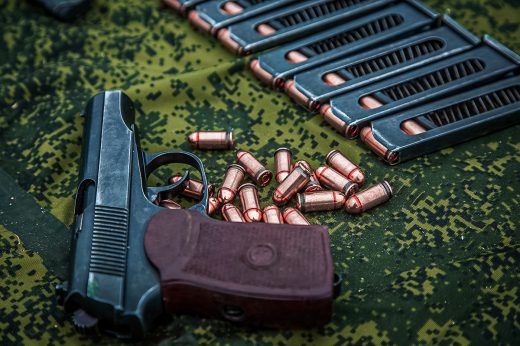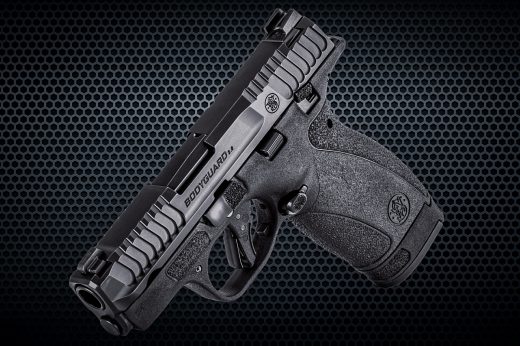- Most AR-platform firearms would be prohibited
- Many common semi-auto firearms would be banned from sale or manufacture
- Existing guns and mags would be grandfathered but would have to be locked up
- Detachable magazine capacity would be limited to 10 rounds
- Age to purchase a firearm would be raised to 21
The notoriously anti-gun Sen. Dianne Feinstein of California introduces an assault weapon ban practically every year, like clockwork. For nearly 20 years, they’ve gone nowhere. This year may be different.
Feinstein’s new Assault Weapons Ban of 2023, introduced in the U.S. Senate this week, has the public backing of President Joseph Biden, who is using the recent tragic shooting in Monterey Park, California, as an opportunity to push his stalled anti-gun policies.

In a statement released on Jan. 23, 2023, Biden wrote:
“When I signed the Bipartisan Safer Communities Act — the first significant piece of gun safety legislation in nearly 30 years — I said that there was still work to be done to keep our communities safe and keep dangerous firearms out of dangerous hands. In the short time since, communities across America have been struck by tragedy after tragedy, including mass shootings from Colorado Springs to Monterey Park and daily acts of gun violence that do not make national headlines.”
“Today, Senator Feinstein, with whom I worked with to pass the last Assault Weapons Ban in 1994, has once again introduced an Assault Weapons and High-Capacity Magazine Ban in the Senate, as well as legislation raising the age to purchase them to 21,” he continued.
If you ever want to sell prohibited firearms in the future or give them to anyone, the government will get to review the transactions.
Feinstein introduced the 126-page “Assault Weapons Ban of 2023” earlier this week. U.S. Rep. David Cicilline (D-RI) is expected to introduce companion legislation in the House before the week is out.
The proposed legislation would ban the sale, transfer, manufacture, and importation of “military-style assault weapons” and “high-capacity magazines and other high-capacity ammunition feeding devices.” Much like the Federal Assault Weapons Ban of 1994, those definitions include any semi-automatic rifle that can accept a detachable magazine and possesses one of many “military characteristics” listed in the law, like a pistol grip, a forward grip, a threaded barrel, or a folding or telescoping stock.
This would also mean very few semi-auto hosts for suppressors in the future.
Any detachable magazine holding more than 10 rounds would be banned and labeled “high-capacity.” The standard magazine for both AR-15 and AK-47 variants is 30 rounds. It’s estimated that there are 24 million firearms in the U.S. in private ownership that fit in that category. That fact would, to most rational people, mean they are in common use and therefore protected by the Second Amendment, according to the Supreme Court
Like the 1994 AWB, the new ban would grandfather in currently owned firearms and magazines on the prohibited list, but they would have to be stored in a safe or locked container. If you ever want to sell them or give them to anyone, the government will get to review the transaction under the proposed law.
At the Senate bill’s introduction, the proposed ban had 36 Democrats signed on as co-sponsors.
The bill also includes a list of firearms exempt from the ban by name, including the M1 Carbine, the M1 Garand, and the SKS with a fixed mag, but there are also, oddly, many lever-action rifles and bolt guns included on the exempt list that wouldn’t have been affected by the new law anyway.
GOOD GEAR – Spartan Kick Your Tastebuds With the BRCC Ready To Drink 300 Vanilla Bomb
Biden Claims the 1994 Assault Weapon Ban Reduced Mass Shootings: It Didn’t

Biden is fond of touting his role in passing the Federal Assault Weapon Ban of 1994, which was in place for 10 years until it was allowed to expire under a sunset clause during the George W. Bush administration in 2004. In his statement, he used its success in reducing mass shootings as a justification for the new, similar ban’s passage. But the effectiveness of the 1994 ban is highly debatable.
The Washington Post wrote a story about this very topic in March 2021. It quotes Northeastern University professor James Alan Fox, who collected data back to 1982 that showed “assault weapons” account for 24.6% of “public mass shootings.”
“Assault weapons are not as commonplace in mass shootings as some gun-control advocates believe,” Fox wrote in a 2013 article published in the Homicide Studies journal. “Semiautomatic handguns [47.9 percent] are far more prevalent in random massacres than firearms that would typically be classified as assault weapons.”

In the story, the Post writes:
“Did the assault weapons ban make a difference in mass shootings? Not significantly, according to Fox’s data at the time. From 1976 to 1994, about 18 mass shootings occurred each year. During the ban — 1995 to 2004 — there were about 19 incidents per year. After the ban, through 2011, the average went up to nearly 21.”
It should be noted that one of the most high-profile mass shootings in modern history at Colorado’s Columbine High School occurred on April 20, 1999, right in the middle of the federal AWB.
Additionally, as the Post points out, the ban was only in place for a decade, so any data gleaned from it is relatively useless in terms of assessing impact — there wasn’t enough time for it to do anything one way or the other, researchers argue.
Also, we aren’t dealing with rock-solid terms with definitions accepted by everyone here. Different researchers define things like “mass shootings” and “assault weapons” in different ways. Some call an incident in which three people are killed with a firearm a mass shooting, regardless of the circumstances (murder-suicides, gang violence, police shootings, etc. are often included); others say the magic number of victims for a shooting to qualify as a mass shooting is four or six.
Likewise, there is also no settled definition of “assault weapon” among researchers. All of these variables can wildly skew related statistics.
Rough Year So Far for Gun Rights
The president’s announcement comes on the heels of two high-profile kicks to the head for gun rights in the U.S. First, Illinois recently passed a sweeping state-level assault weapon ban, which is currently being fought in court.
More recently, the ATF handed down a new rule regarding pistol braces, aka stabilizing braces, that reclassifies nearly all firearms featuring the devices as short-barrel rifles (SBRs) or as other items that the National Firearms Act regulates. If the rule stands, millions of gun owners will be forced to modify their lawfully purchased and/or modified firearms, register them with the ATF (assuming they are able to do so by the deadline), surrender them, destroy them, or become felons 120 days after the rule is published in the Federal Register. That publication is still pending.
The new rule treats braces as stocks, for all intents and purposes; millions of braces were sold and purchased for more than a decade under the ATF’s previous ruling and guidance that they were not, in fact, stocks.
READ NEXT – ATF Drops New Pistol Brace Rule: It’s Not Good










Comments